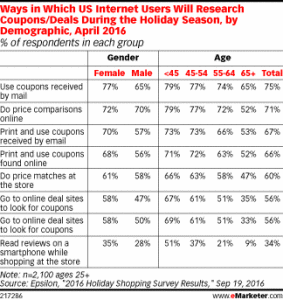With the end of Daylight Savings Time on Sunday, we enter the homestretch of the year. Here’s some of what we’ve been reading this week—looking forward even as we “fall back.”
SHOULD FOLLOWER COUNT DETERMINE WORTH?
It’s a question that depends on context. For regular everyday products like shoes, toasters, or books, the answer is a clear yes—more followers means your promotional dollar goes farther. But for “high art”—where value is supposedly determined by long-term aesthetic value more than short-term commercial ups and downs—the question becomes more complicated. A Dutch artist is playing with this line, and in the process reveals some uncomfortable truths about what’s behind some of those large follower counts.
Related from AdWeek: “How Celebrities’ With the Best Instagram Engagement are Helping Brands.”
#social #instagram #caveatemptor
SERIAL IS COMING TO PANDORA
The next edition of the revolutionary podcast “Serial” will be running on Pandora. That means there should be many more ways to advertise on it than through a single sold-out sponsorship. They aren’t saying when the second season will start yet, but Pandora has announced that season one will be available for listening as of Nov 24.
#mobile #pandora #serial #podcast
APPS OR BROWSERS?
In all the debate about whether the present and future of mobile is in apps or on browsers, it’s good to see an article that draws distinctions. That is, it depends. And in some cases, especially news, readers are split:
“For example, 36% of respondents said they mostly used apps to read entertainment news. But 37% said they mostly used a browser. For human interest stories, 36% turned to apps and 38% to mobile browsers. And for science or technology news, the breakdowns were identical, at 38% each.”
#mobile #browsers #apps #news
WILL LOUSY CREATIVE SPOIL INSTAGRAM FOR THE REST OF US?
As Instagram opens up its API, some marketers are afraid of the coming wave of ads. Will a billion terrible ads ruin our sandbox? The answer, as always, is to make creative that’s the best fit for book, reader, and audience platform.
#mobile #adtech #bepartofthesolution
PROGRAMMATIC OUTDOOR
Google recently announced a test of adding outdoor billboard inventory to their DoubleClick system. While there are various programmatic options available to us among current outdoor companies–including geo-fencing and app network buys tied into outdoor displays–the scale of Google’s reach make this a potential game changer. According to Business Insider,
“If the project proves successful, advertisers might soon be able to buy billboard ads using Google’s DoubleClick technology, which will pull in historical and real-time data signals — including audience, weather, travel information, sporting events, and scores — to decide which creative messages to display, which billboards to display them on, and the best time for them to run.”
File this under experiments to watch.
#outdoor #programmatic #experimentstowatch #media
BOOMERS UNDER-INDEX FOR SMARTPHONE ADOPTION
Next to Now focuses on the near-future of marketing, but it’s worth remembering that our bread-and-butter work comes from selling books right now to readers who are buying them right now. And that means the Boomer generation. So it’s worth noting that Boomers are not as easily reached with mobile marketing as the Millennials. Only 42% of Boomers own a smartphone, and those that do own a smartphone do not live through it to the extent that younger generations do. Worth considering when you’re putting together a media plan.
#mobile #boomers #media
“BUSTLE HAS A BABY”
A nearly-slightly-but-not-all-the-way-snarky article on the New Yorker’s site announces that Bustle (a site and magazine we like a lot) is starting a new website for millennial moms, Romper. Bustle’s managing editor, Margaret Wheeler Johnson, provides the money quote:
“The media talks about millennials as if they are the kids, and, actually, they’re having kids.”
Good point.
#millennials #moms #media
THIS MUST BE SERIOUS
Even Facebook’s worried about ad blockers. From a new regulatory filing:
“Revenue generated from the display of ads on personal computers has been impacted by these technologies from time to time. As a result, these technologies have had an adverse effect on our financial results and, if such technologies continue to proliferate, in particular with respect to mobile platforms, our future financial results may be harmed.”
#adblocking #facebook










